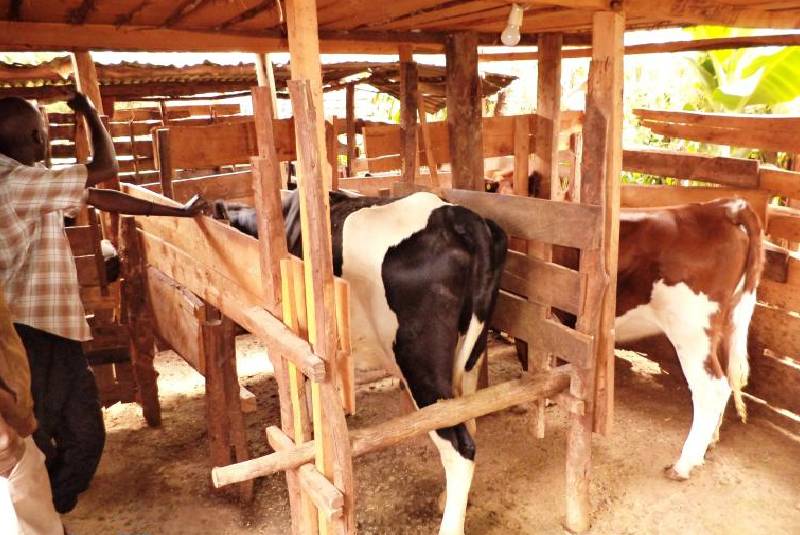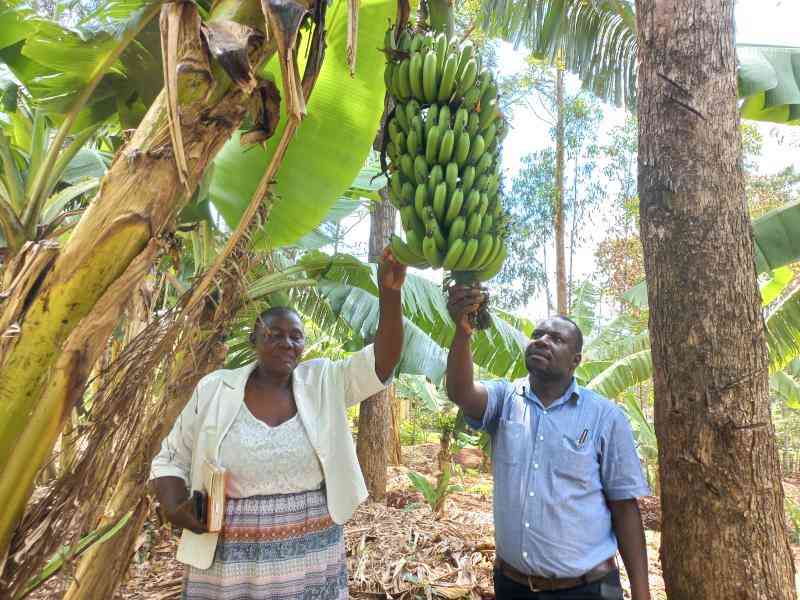Dear Daktari, my New Year resolution is to start dairy farming. I intent to build a zero grazing dairy unit. Kindly what are the features of such a unit? [Martin Togaren]
Martin, housing is a critical aspect in dairy farming. It not only enhances the safety and comfort of the animal but also health and productivity. Before we look at the main features, let’s start with its location.
Where to locate it
The location of a dairy unit depends on many factors. If your farm is small, there might not be much to consider.
But if you have a big farm then the above factors must be considered.
A) Security
Farmers need to fence their farms to keep away malicious neighbours and stray animals that may carry diseases or ticks into your farm. Security can be enhanced by setting up the dairy unit in a place where it can be monitored during the day or night. To further enhance this, lighting can be added. There are good solar powered lamps in the market which can light up your farm.
B) Slope or Gradient of your farm
Dairy units are better placed on the higher side of the farm. This is advantageous because the dung from the unit can flow by gravity to your farm where it can be directed into a composite pit or into a biogas digester.
Features of a diary unit
The Cubicles
The number of cubicles will vary according to the number of animals you have but the measurements for each cubicle are 1.2 metre by 2.1 metres. Cubicles provide the animals with a resting space at night and even during the day. Animals will spend more time here and if the floor is not well made they can bruise the animals and result in wounds. This is the area where cow mattresses must be placed. In most farms they will fill this place with sand or murram which also gives warmth to the animal. Cement is very cold and is not comfortable for the animal. Cubicles are normally opposite the feeding area.
Walking area
The walking area gives the cow room to walk and exercise. It is between the cubicles and the feeding area and is open to give the cow access to sunlight. The walking area should be made of concrete to help in the shaping of the hooves and avoiding overgrowth and coiling. It should be curved for ease of cleaning.
Feeding area
The feeding area will have troughs for holding water and feeds. Each animal should have its feeding trough to avoid fighting and injury during eating. The water trough must have water all the time (ad lib) and should have an outlet for ease of cleaning.
Milking area
This will be placed at one extreme end on the side of the cubicles close to the store and chaff cutting area. The milking area has a small feeding trough where concentrates are placed for the animal to eat during milking and a place where the mineral lick can be suspended. It has bars for retraining the head and the hind legs during milking.
Calf Pen
This should be raised and protected from wind. Exposure to wind will predispose the calf to respiratory tract infections. The unit should have a door that can be locked to make it secure. Provide a foot bath for disinfection of anyone coming into the unit.
[The writer was winner of Vet of the Year Award 2016 and works with Kenya Tsetse and Trypanosomiasis Eradication Council, [email protected]]
Want to get latest farming tips and videos?
Join Us
 The Standard Group Plc is a multi-media organization
with investments in media platforms spanning newspaper print operations,
television, radio broadcasting, digital and online services. The Standard Group
is recognized as a leading multi-media house in Kenya with a key influence in
matters of national and international interest.
The Standard Group Plc is a multi-media organization
with investments in media platforms spanning newspaper print operations,
television, radio broadcasting, digital and online services. The Standard Group
is recognized as a leading multi-media house in Kenya with a key influence in
matters of national and international interest.
 The Standard Group Plc is a multi-media organization
with investments in media platforms spanning newspaper print operations,
television, radio broadcasting, digital and online services. The Standard Group
is recognized as a leading multi-media house in Kenya with a key influence in
matters of national and international interest.
The Standard Group Plc is a multi-media organization
with investments in media platforms spanning newspaper print operations,
television, radio broadcasting, digital and online services. The Standard Group
is recognized as a leading multi-media house in Kenya with a key influence in
matters of national and international interest.







